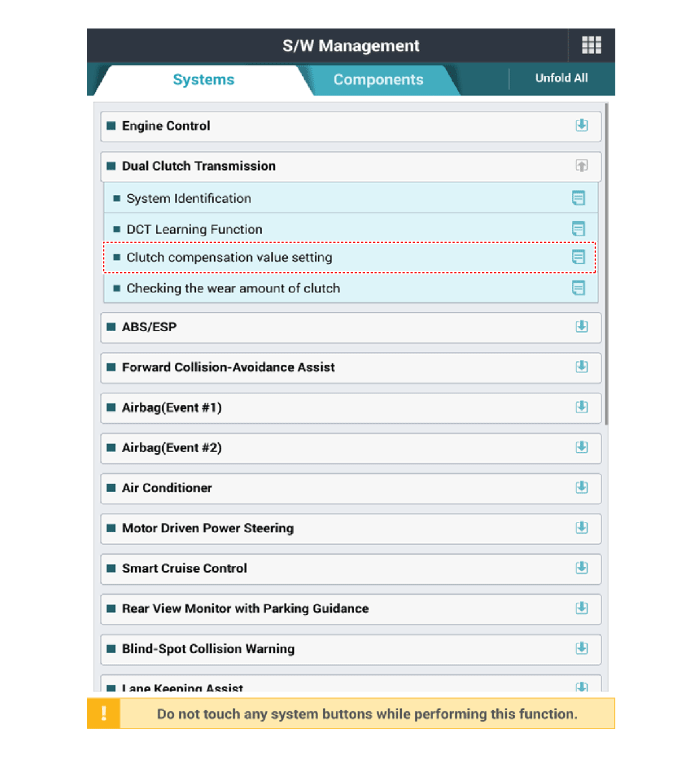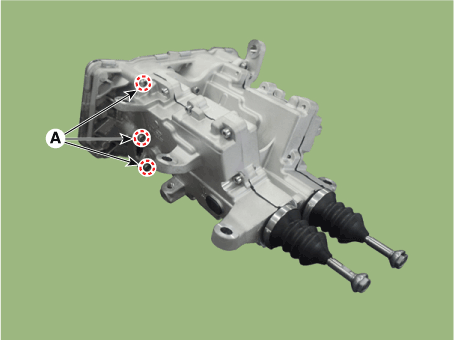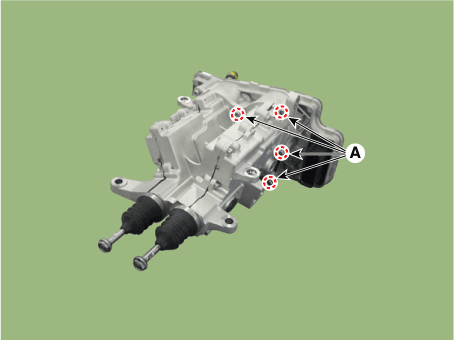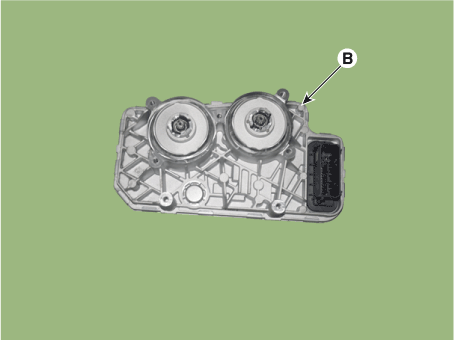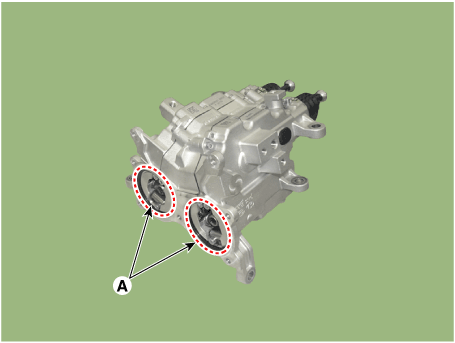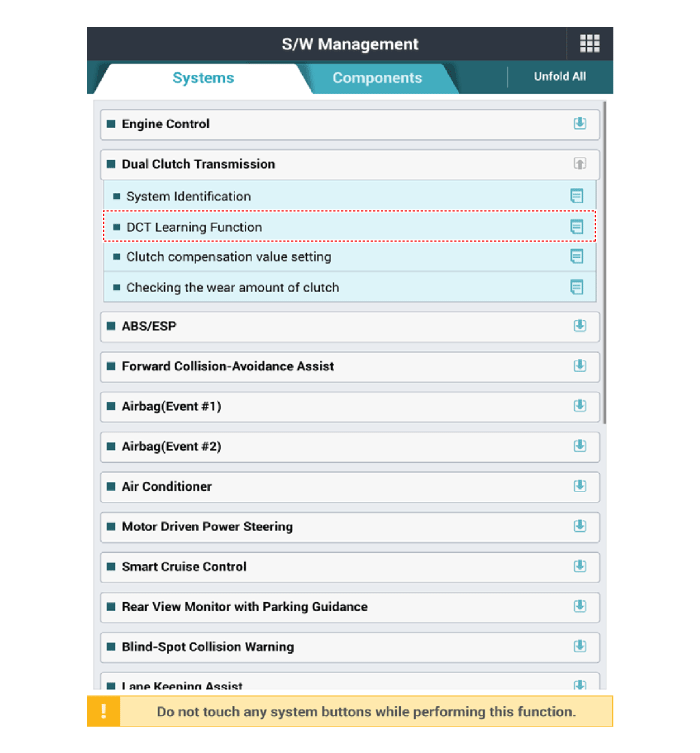Hyundai Elantra: Dual Clutch Transmission Control System / DCT Control Module (TCM)
Hyundai Elantra (CN7) 2021-2025 Service Manual / DCT(Dual Clutch Transmission) System / Dual Clutch Transmission Control System / DCT Control Module (TCM)
Description and operation
| Description |
| • |
Function
The Transmission Control Module (TCM) is like the brain for the Dual Clutch Transmission (DCT). It receives information from various sensors for a wide range of transmission controls to provide an optimal driving environment for the driver. The TCM is programmed for optimal operation in all driving conditions. If the TCM malfunctions, store the failure information in memory and provide the error information to a mechanic for fast and accurate repair. |
Components and components location
| Components |
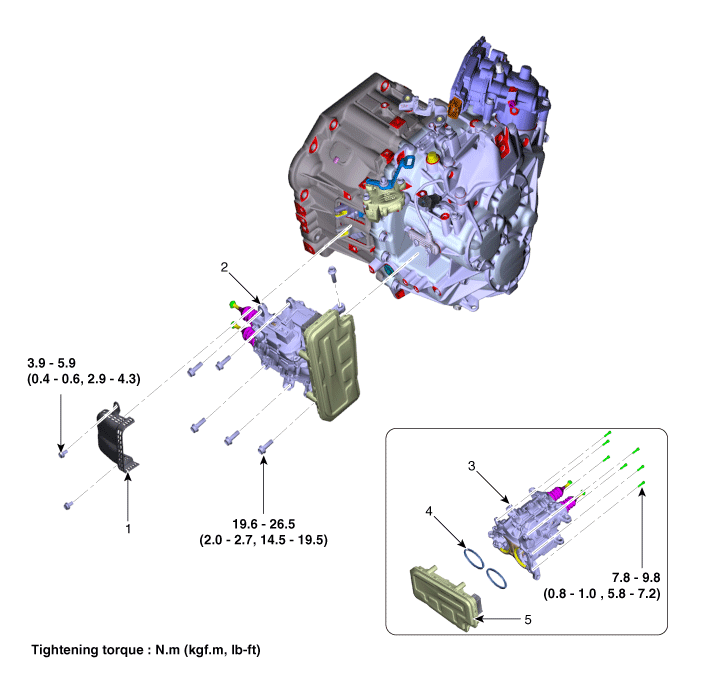
| 1. Fork cover 2. Clutch actuator & TCM assembly 3. Clutch actuator assembly | 4. O-ring 5. DCT control module (TCM) |
Schematic diagrams
| Connector and Terminal Function |
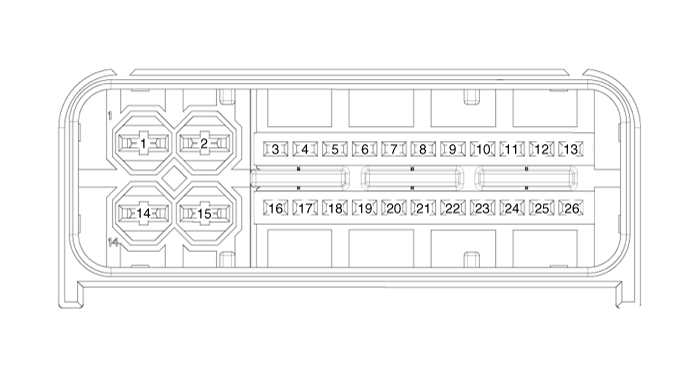
|
Pin
|
Description
|
Pin
|
Description
|
| 1 | Ground 2 (Power) | 14 | Battery power 2 (Motor) |
| 2 | Ground 1 (Power) | 15 | Battery power 1 (Motor) |
| 3 | Shift lock solenoid | 16 | Battery voltage (Low Power) |
| 4 | Paddle shift "Up" | 17 | P-CAN 1 Low |
| 5 | Paddle shift "Down" | 18 | P-CAN 1 High |
| 6 | Inhibitor switch signal "R" | 19 | Local-DCT 1 Low |
| 7 | Inhibitor switch signal "N" | 20 | Local-DCT 1 High |
| 8 | Inhibitor switch signal "D" | 21 | Local-DCT 2 Low |
| 9 | Inhibitor switch signal "P" | 22 | Local-DCT 2 High |
| 10 | - | 23 | PT-Local 1 Low |
| 11 | Ignition voltage | 24 | PT-Local 1 High |
| 12 | Input speed sensor signal 2 (Even) | 25 | Input speed sensor signal 1 (Odd) |
| 13 | Input speed sensor power 2 (9 V) | 26 | Input speed sensor power 1 (9 V) |
Repair procedures
| Inspection |
| Transmission Control Module (TCM) Inspection Procedure |
| 1. | Inspecting TCM ground circuit: Measure the resistance between the TCM and chassis ground. (Check the terminal connected to the chassis ground while using the back of the harness connector as the base point for TCM.)
|
| 2. | Inspecting the TCM connector: Disconnect the TCM connector and visually inspect to see whether there is a bend on the ground terminal of the harness connector. Also visually check the connection pressure. |
| 3. | If no problem is found during inspection in step 1 and step 2, then the problem is with the TCM itself. In this case, replace the TCM and inspect the vehicle again. |
| 4. | Re-inspecting TCM: Install the TCM that was determined to have malfunctioned from step 3 in another vehicle. Reset the error code and then check the operation in that vehicle. If the vehicle operates without any problems, then inspect the first vehicle with the initial problem again. |
| Removal |
| 1. | Prior to replacing the TCM, check the TCM clutch compensation value with the diagnostic tool tool.
|
| 2. | Turn ignition switch OFF and disconnect the battery negative (-) terminal. |
| 3. | Remove the clutch actuator assembly. (Refer to Dual Clutch Transmission Control System - "Clutch Actuator Assembly") |
| 4. | Loosen the bolts (A) and then removing the TCM (B).
|
| Installation |
| 1. | To install, reverse the removal procedure.
|
| 2. | Perform the clutch compensation value setting procedure using the diagnostic tool after replacing TCM.
|
| 3. | Perform the clutch touch point learning procedure using the diagnostic tool after replacing TCM
|
 Description and operation
Description and operation
DescriptionThe Dual Clutch Transmission (DCT) control system measures required data to identify the state of the control target and computes the appropriate compensation value if adjustment is necessary...
 Clutch Actuator & TCM Assembly
Clutch Actuator & TCM Assembly
Specifications
Specification
Item
Specification
Rated voltage12VRod length79.0 - 80.0 mm (3.1102 - 3...
Other information:
Hyundai Elantra (CN7) 2021-2025 Service Manual: Console Armrest
Components and components location Component Location [This illustration shows the LHD type. RHD type is symmetrical.]1. Console armrest Repair procedures Replacement • When removing with a flat - tip screwdriver or remover, wrap protective tape around the tools to prevent damage to components...
Hyundai Elantra (CN7) 2021-2025 Service Manual: Description and operation
DescriptionRear view camera will activate when the backup light is ON with the ignition switch ON and the shift lever in the R position.This system is a supplemental system that shows behind the vehicle through the AV monitor or the ECM (Reverse Display Room Mirror) mirror while backing-up...
Copyright © 2025 www.helantra7.com

